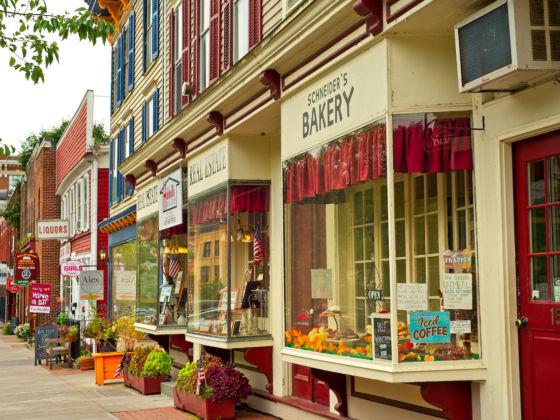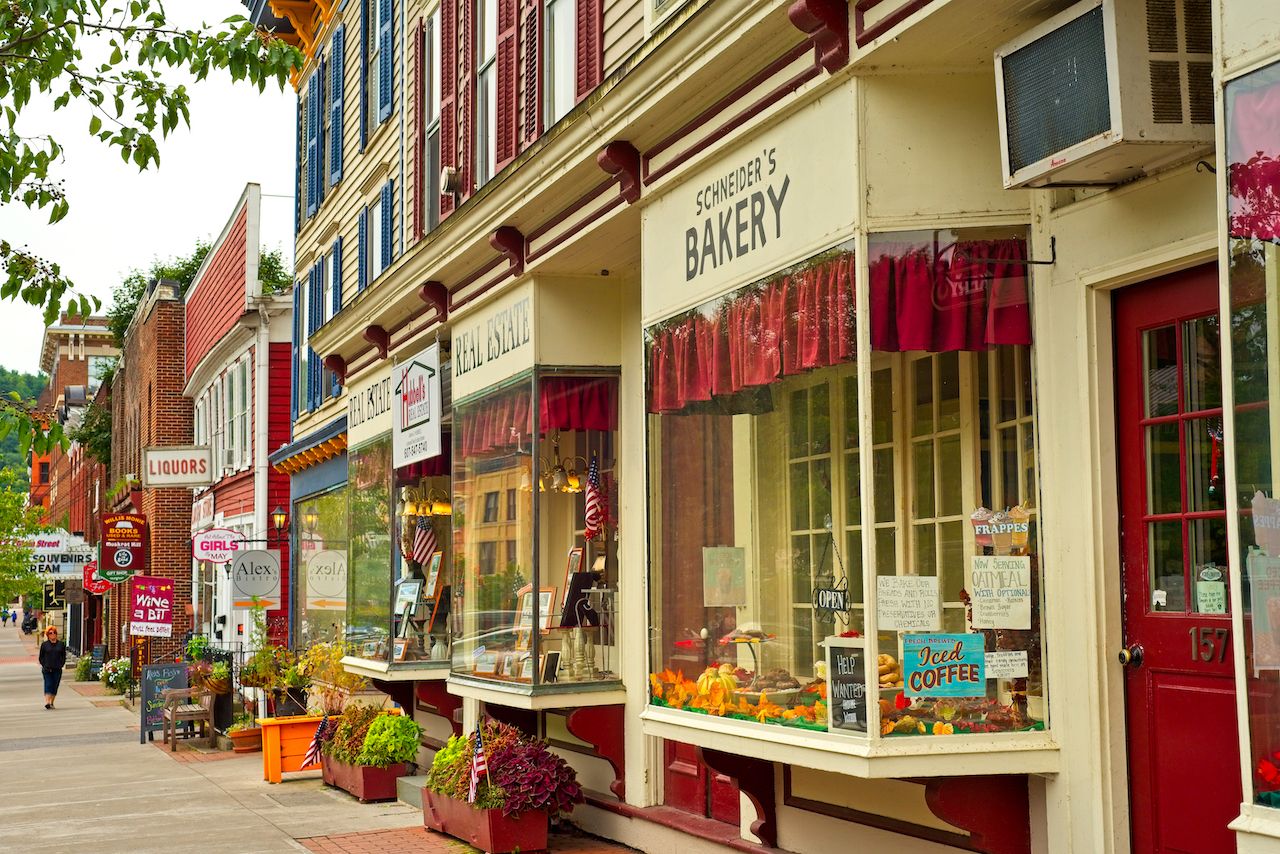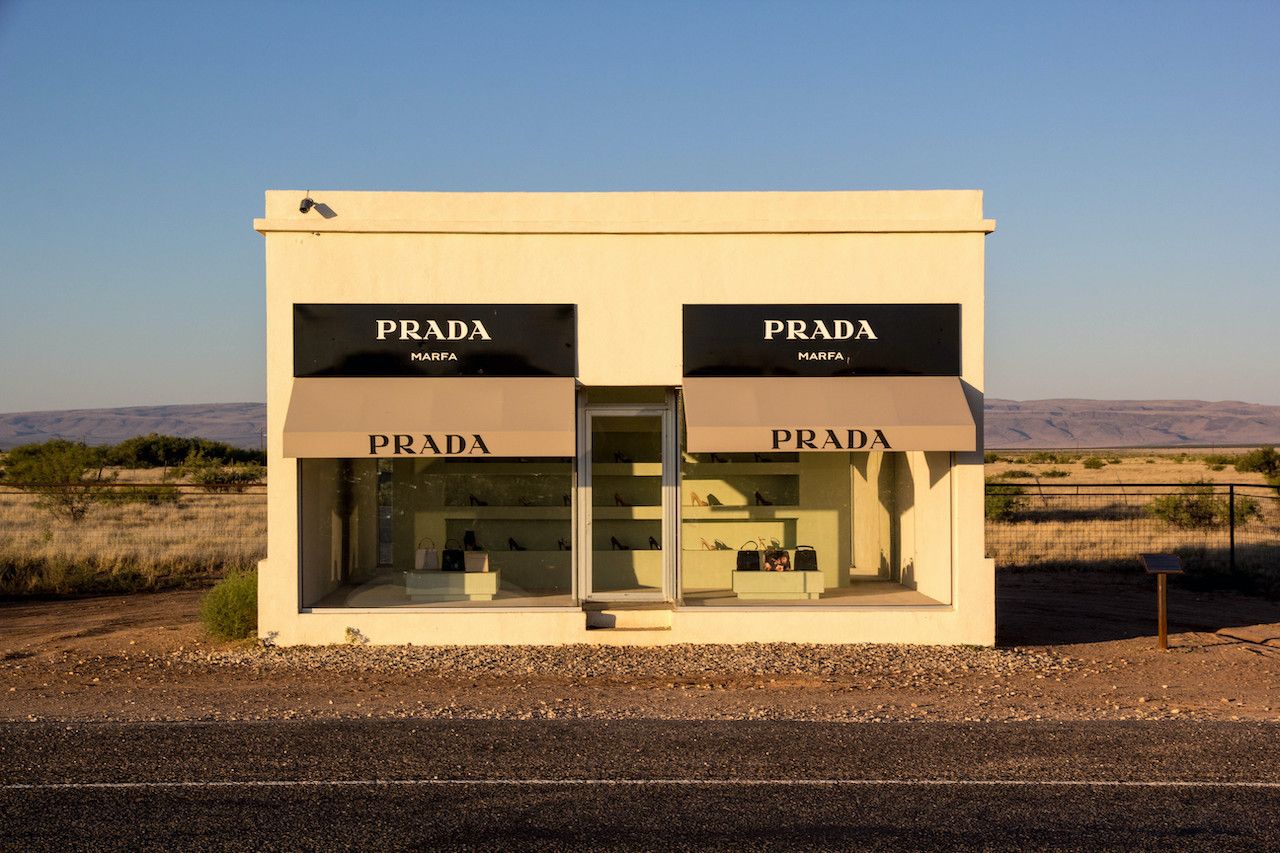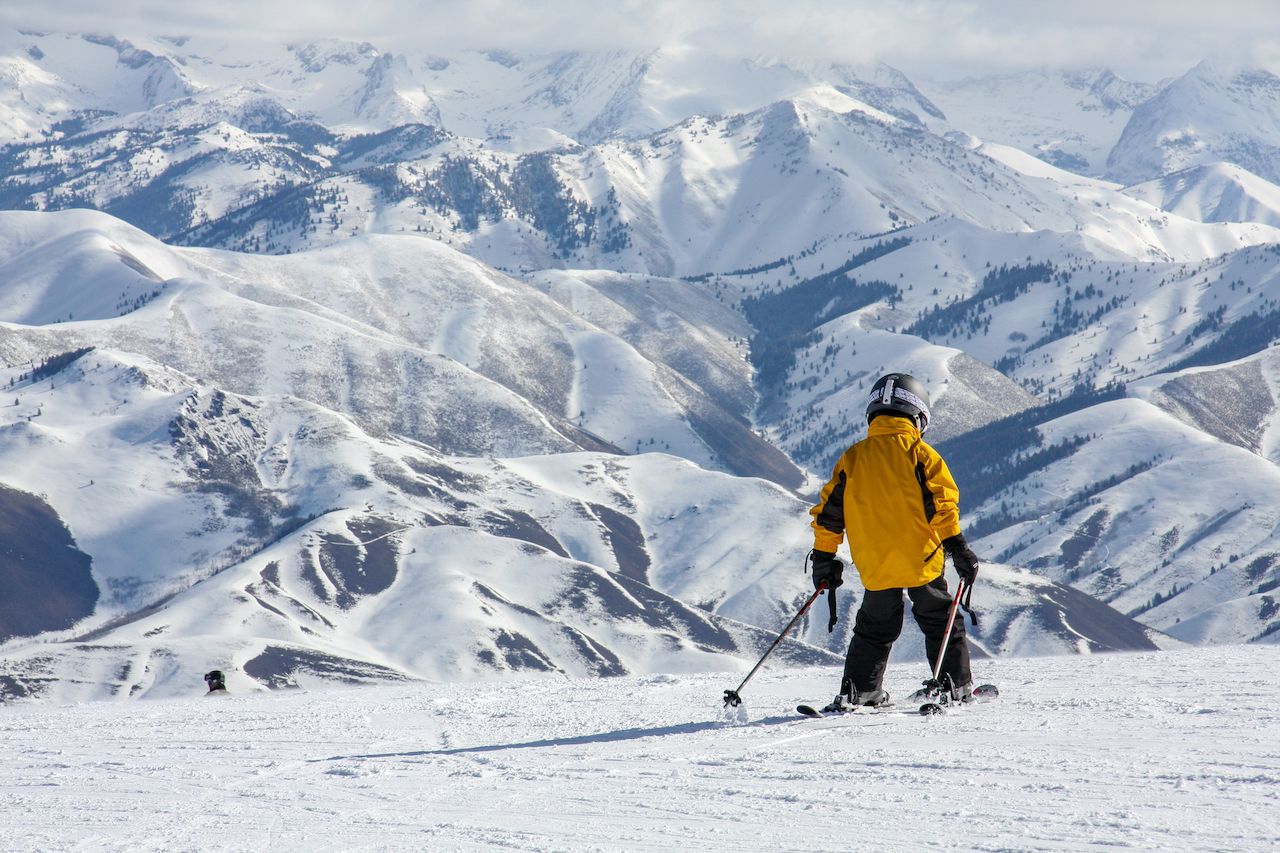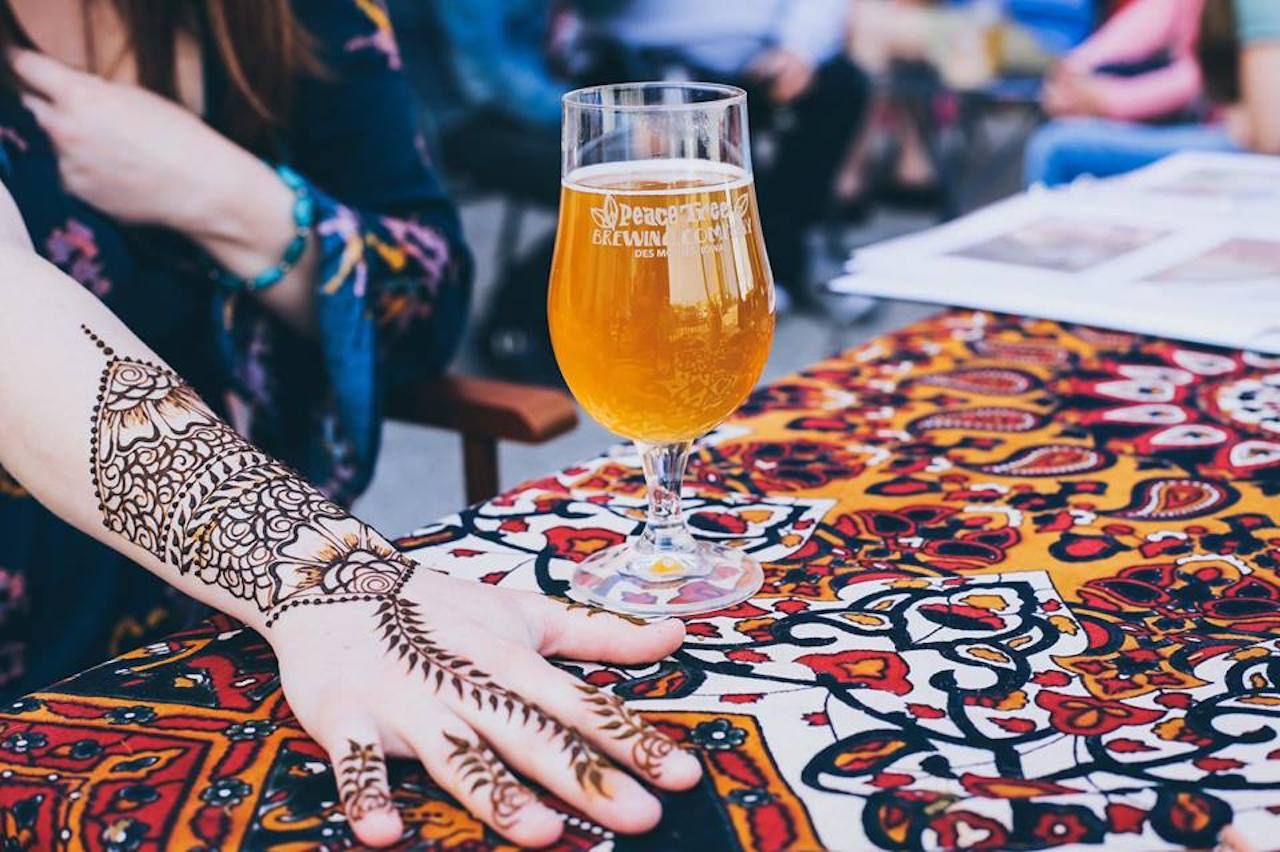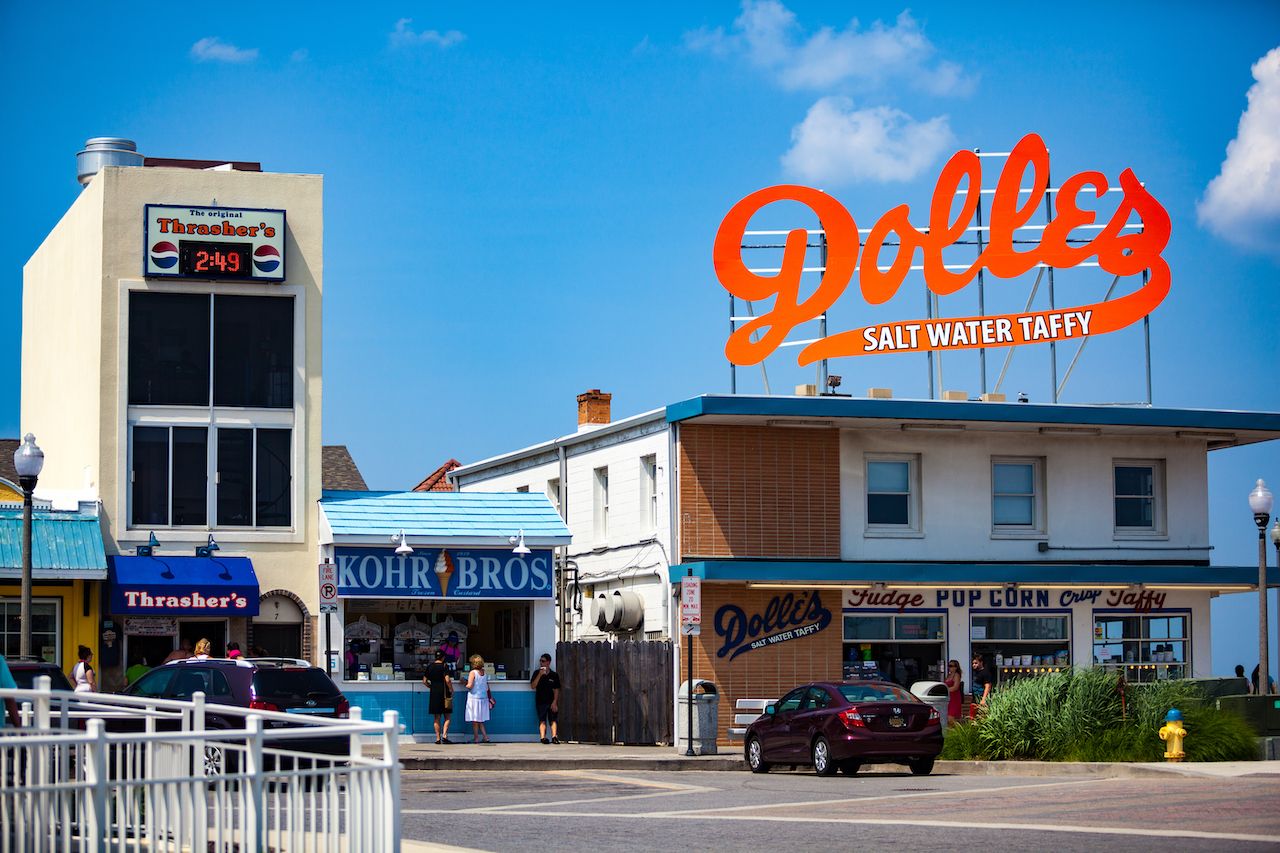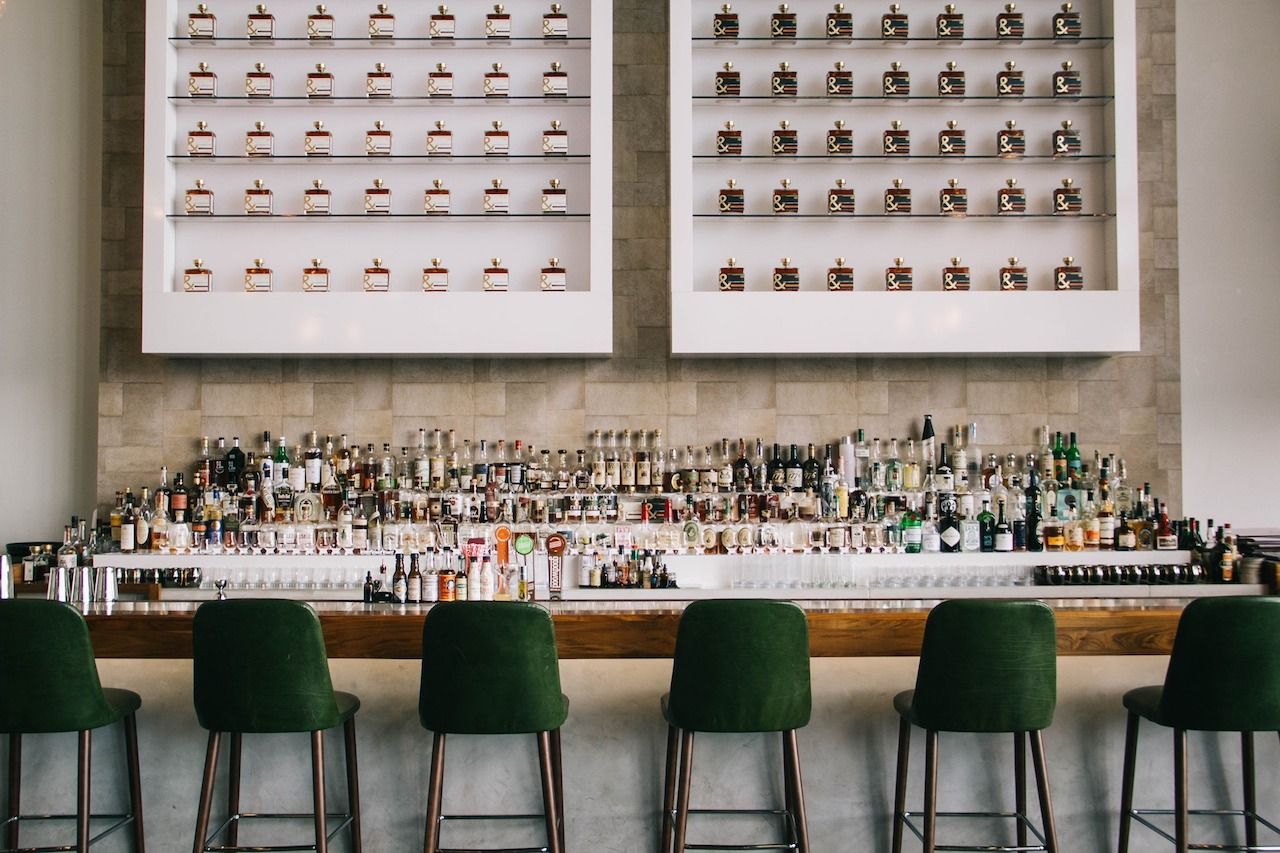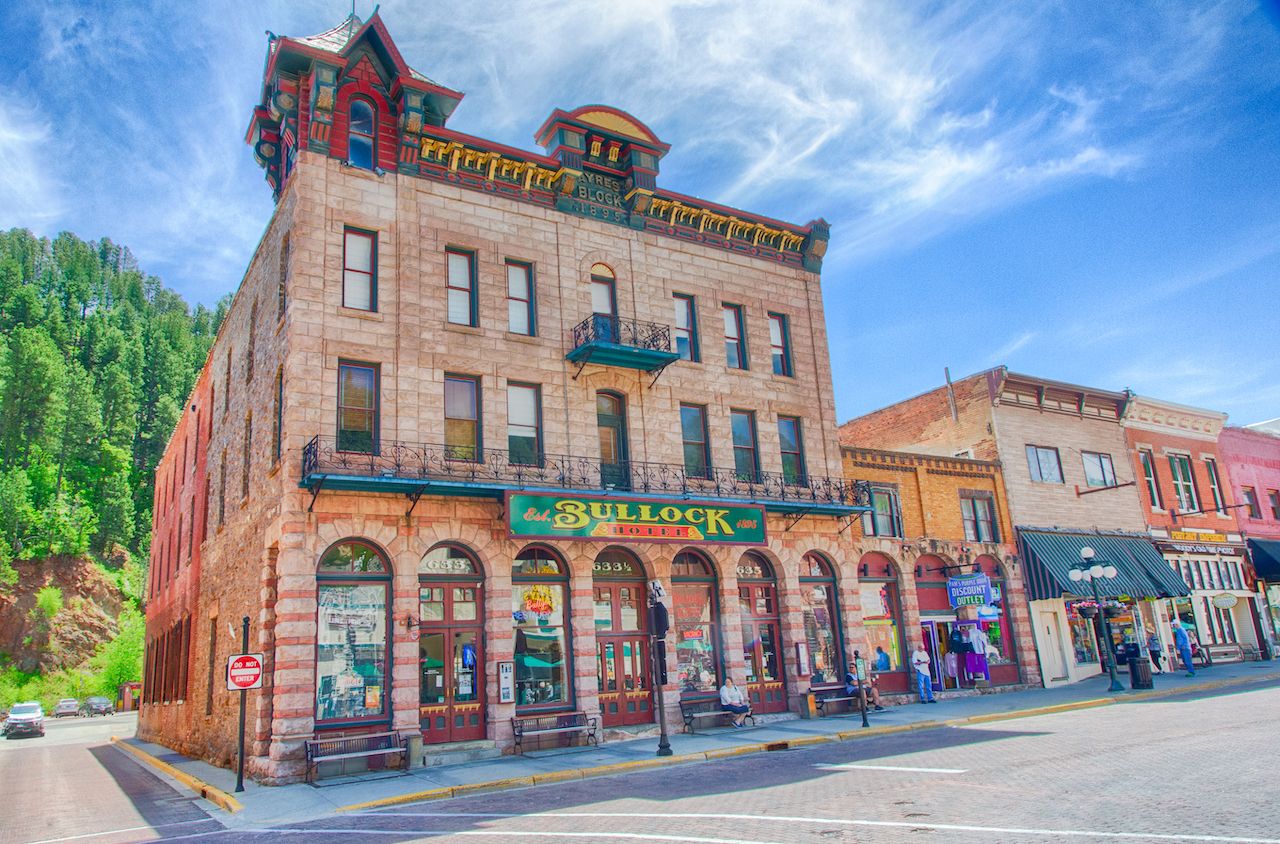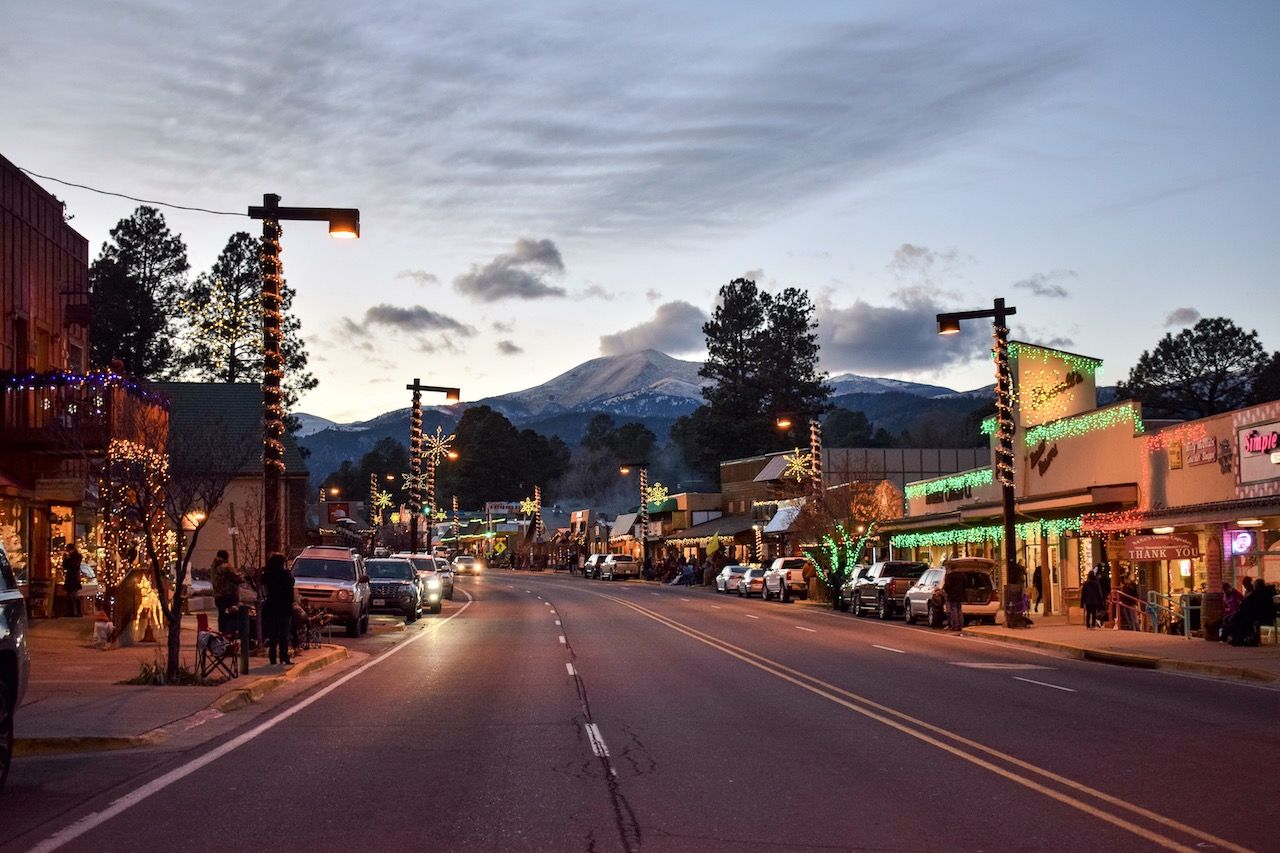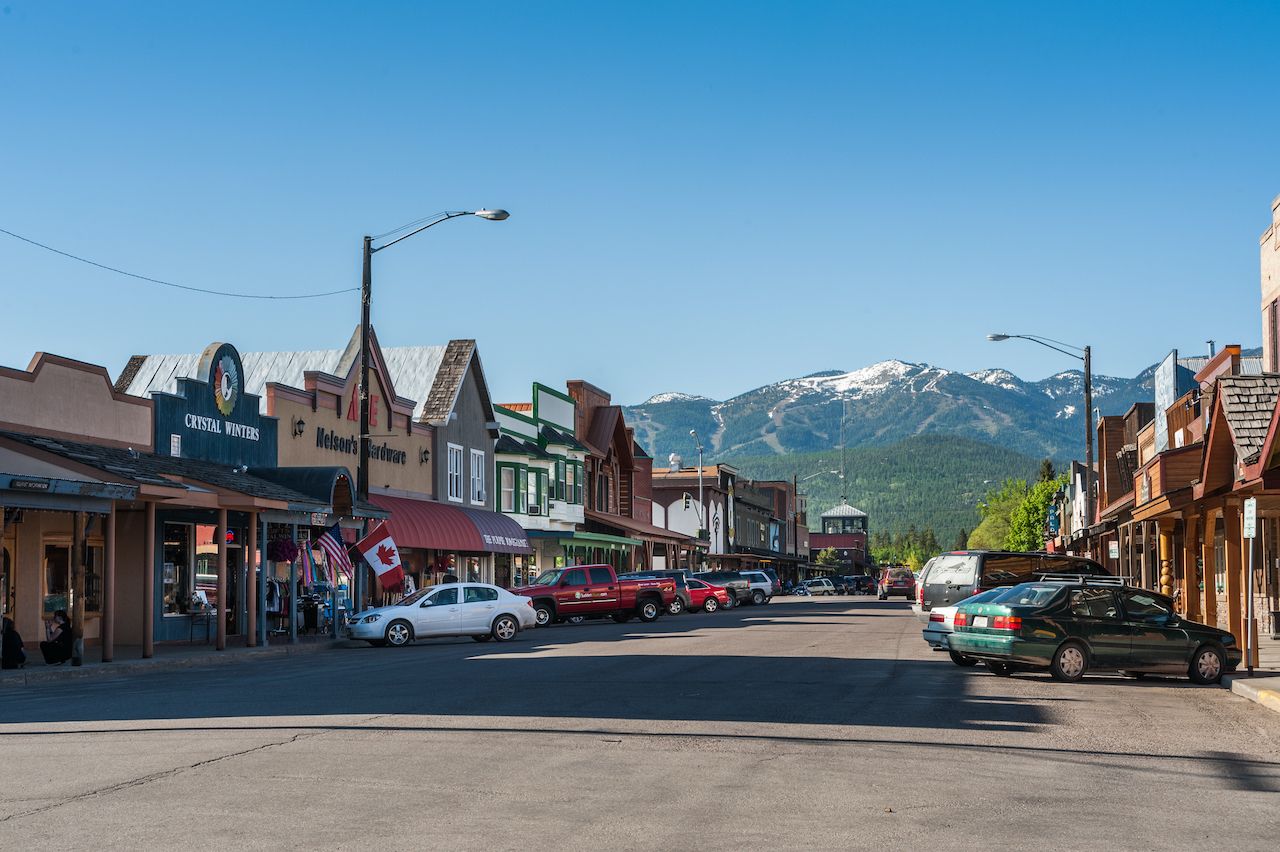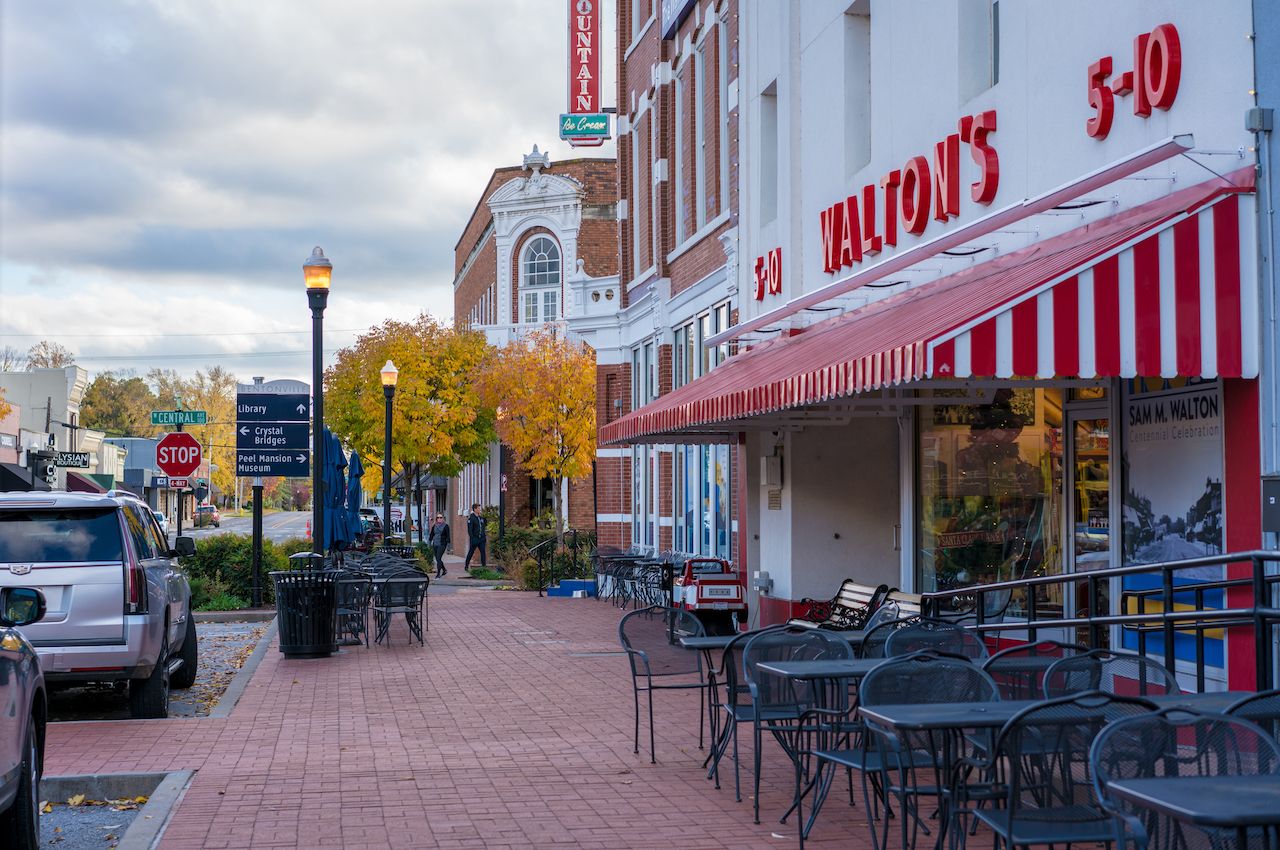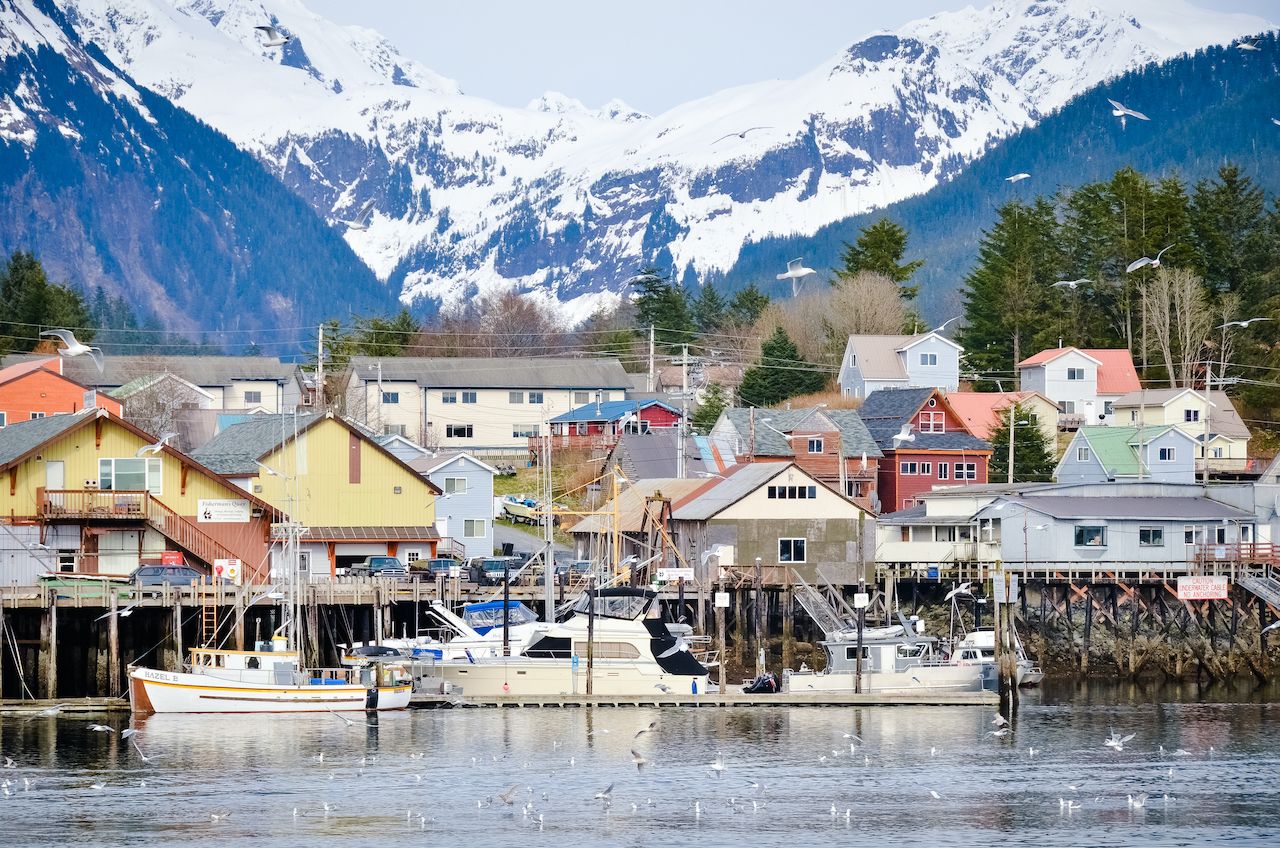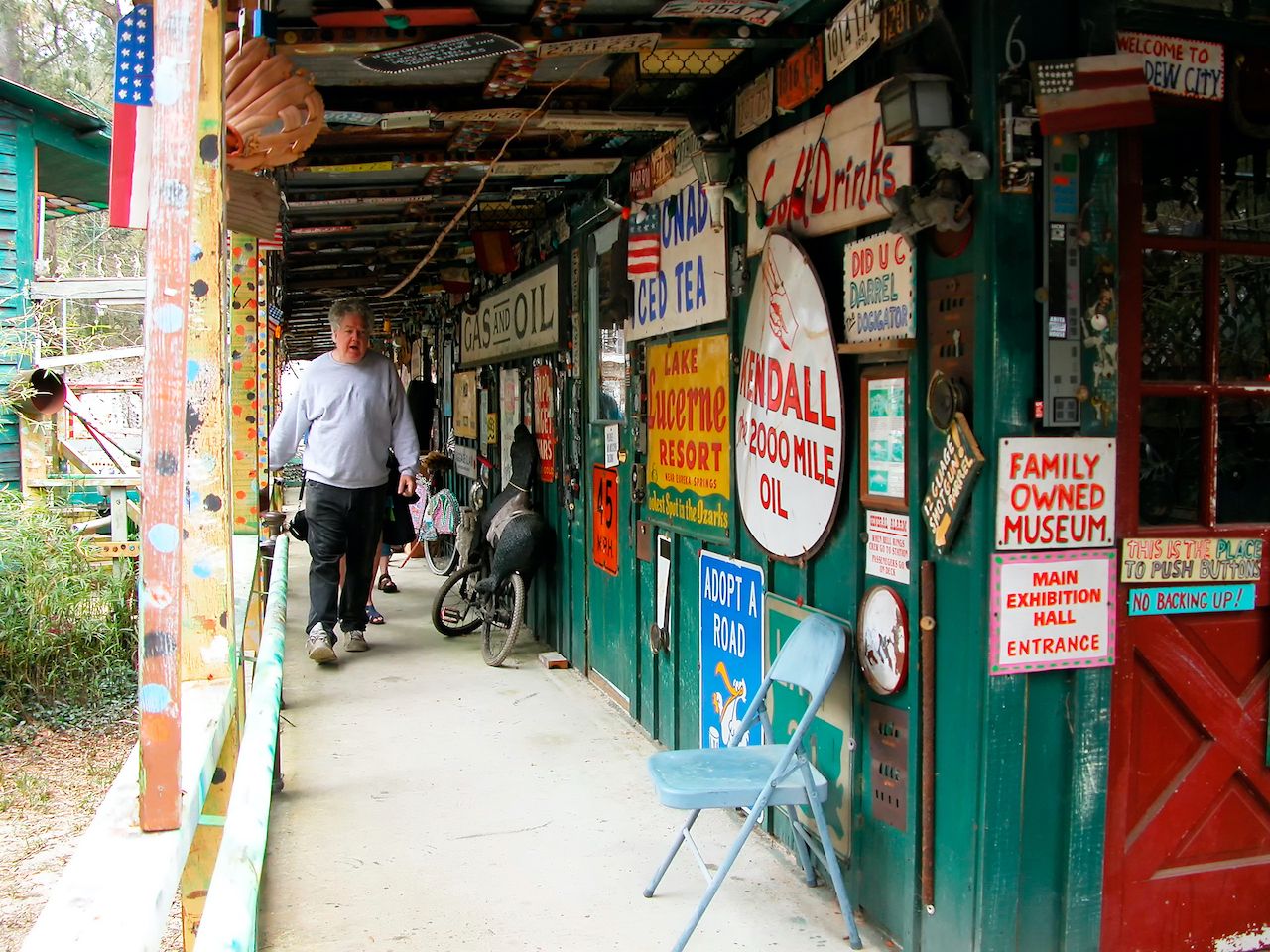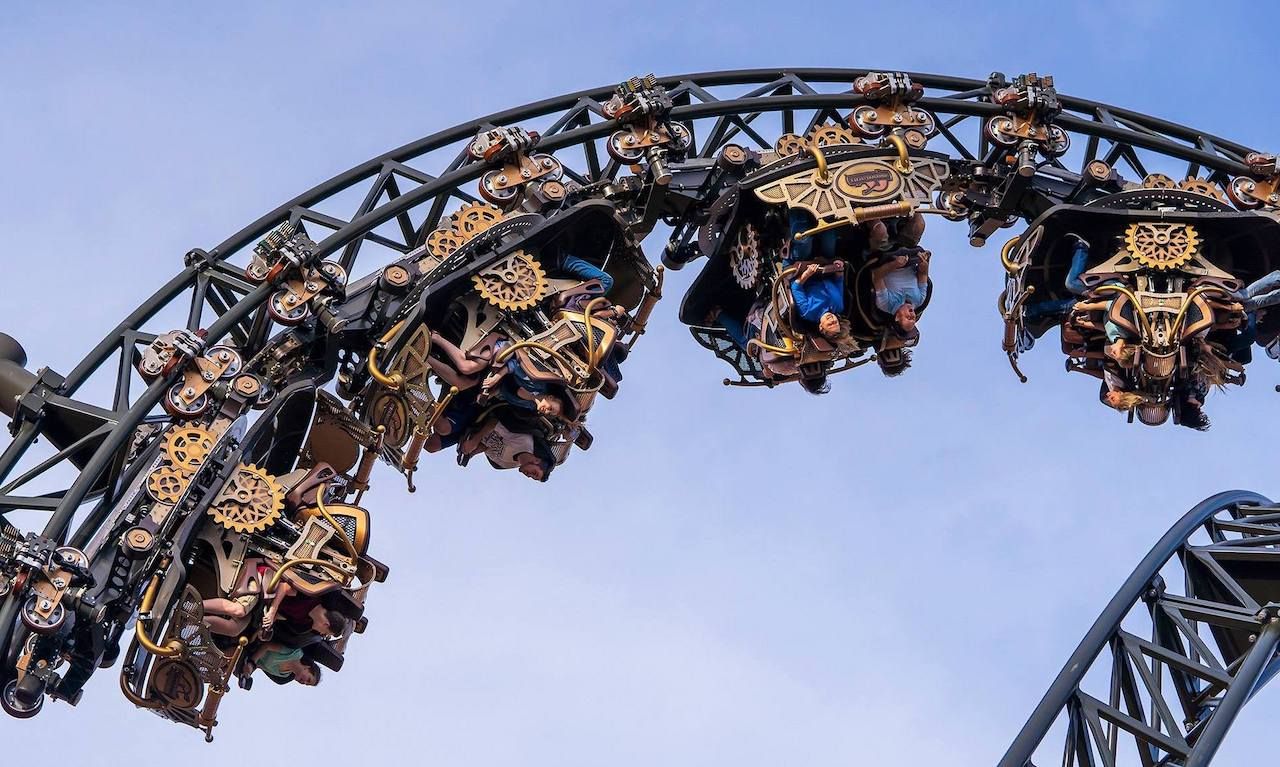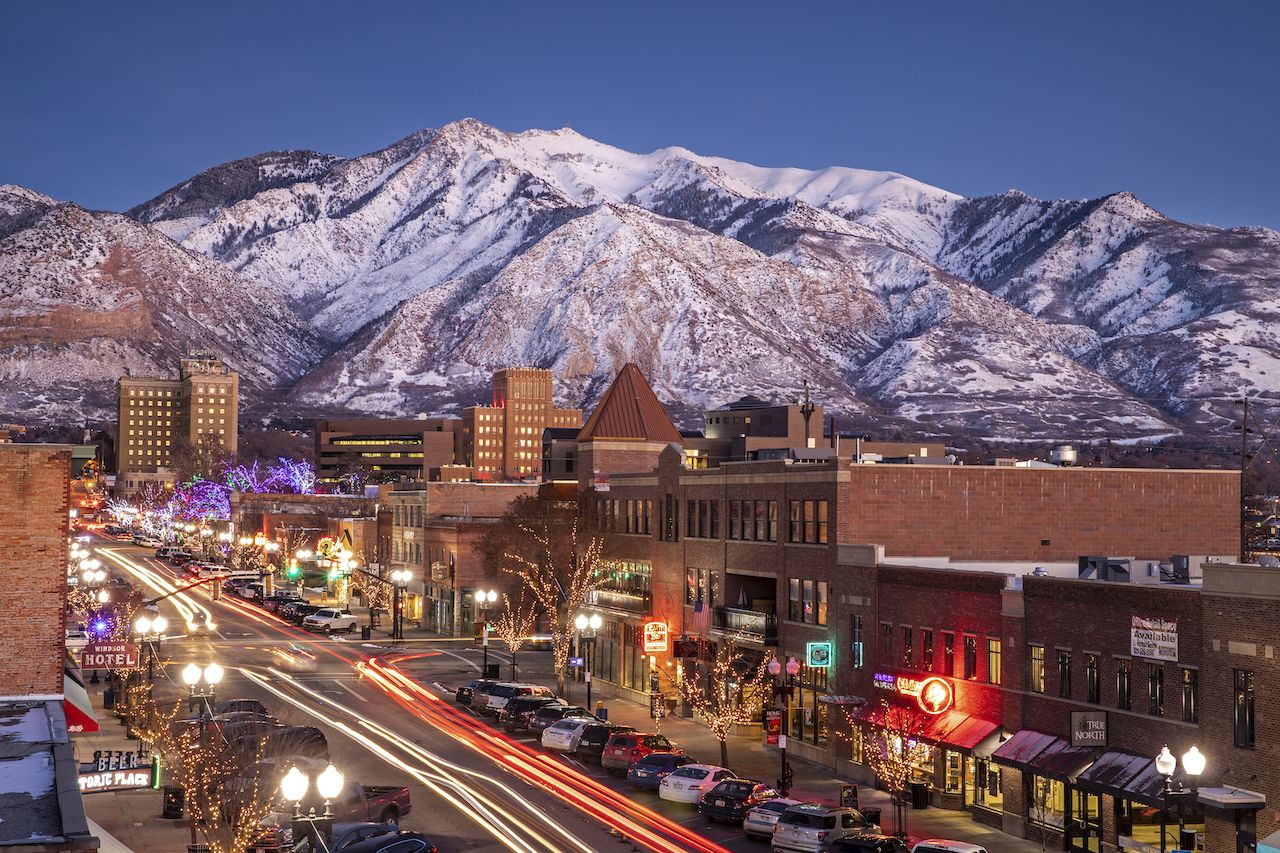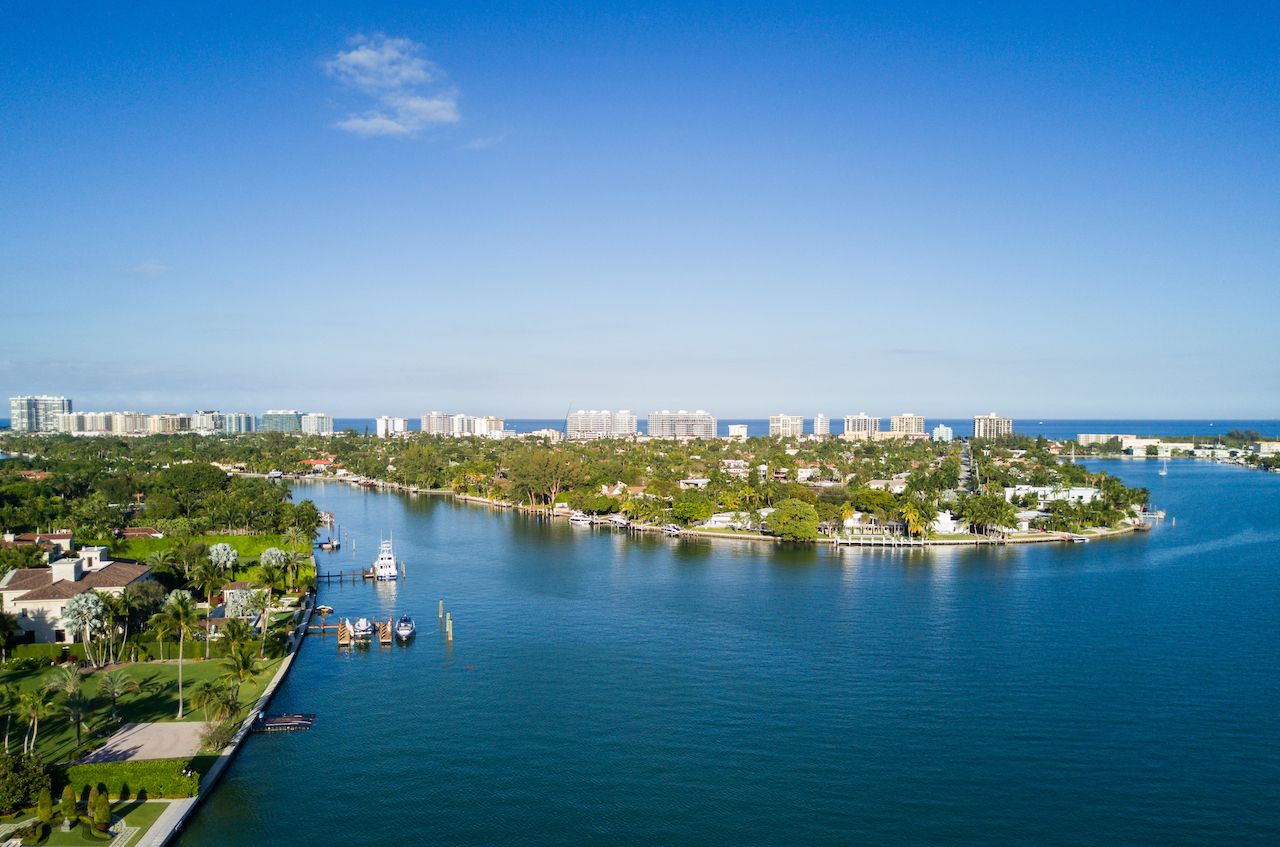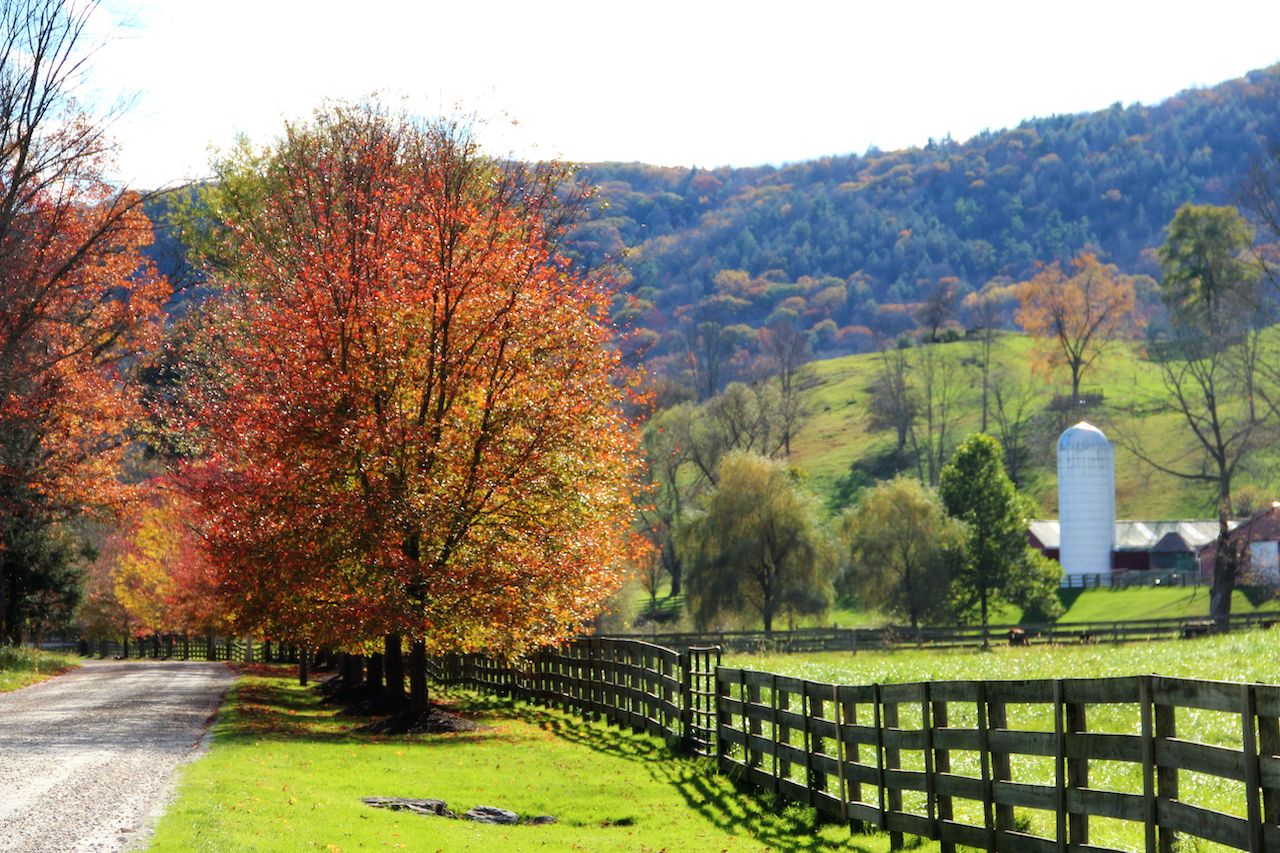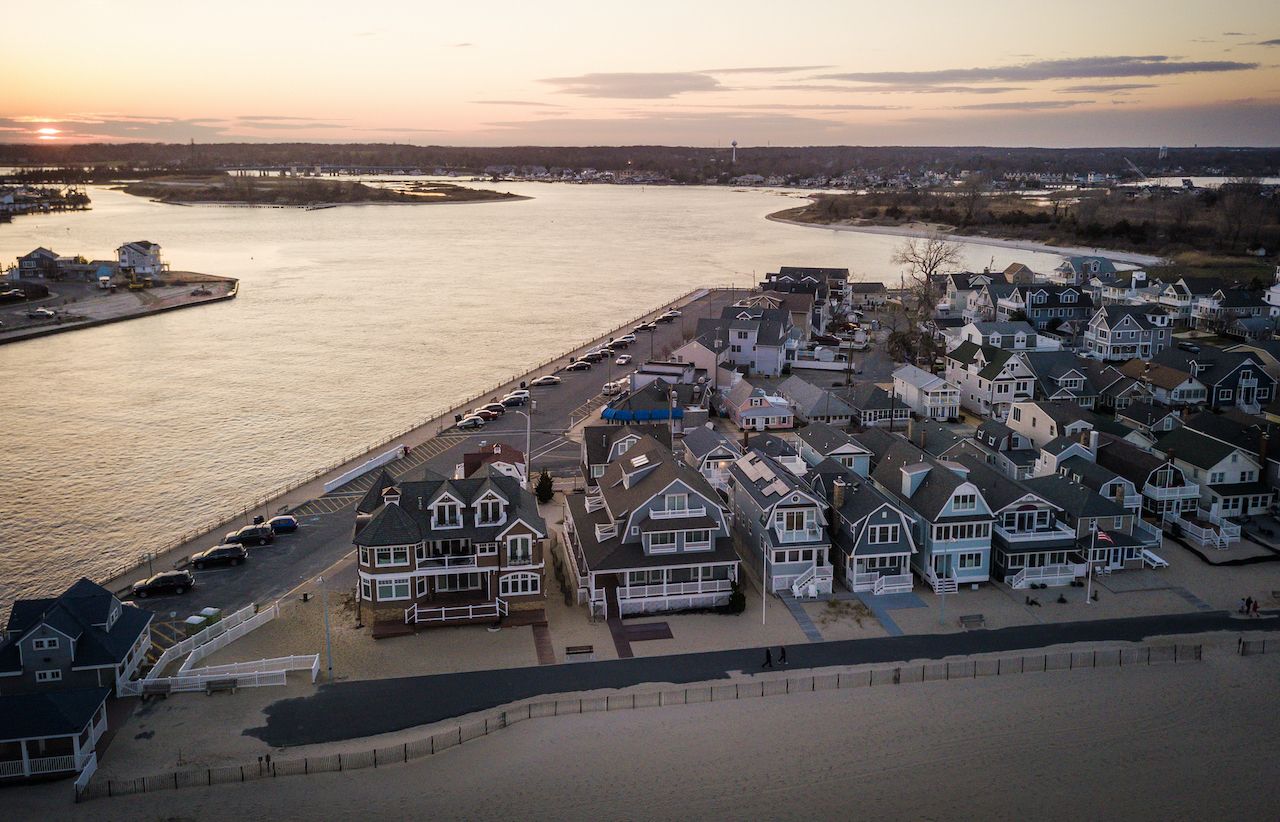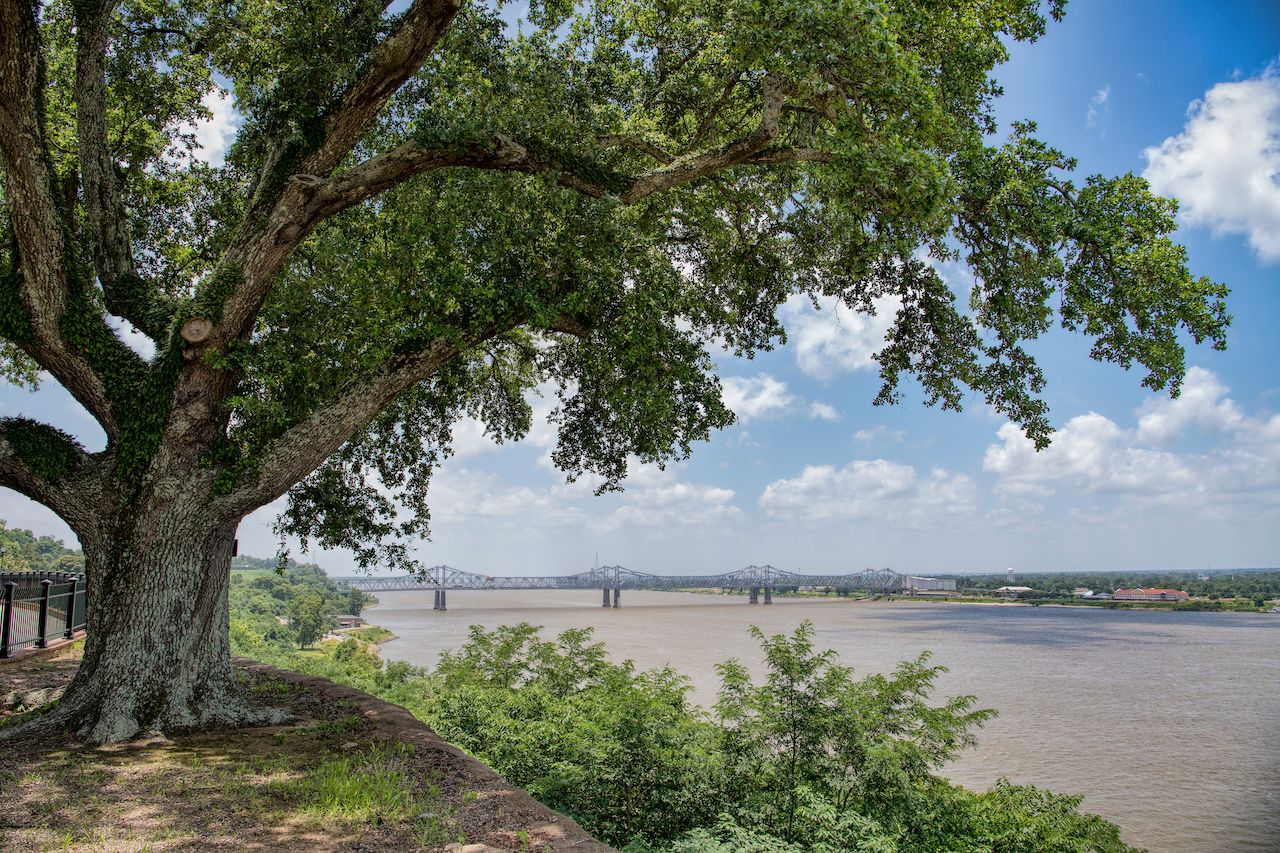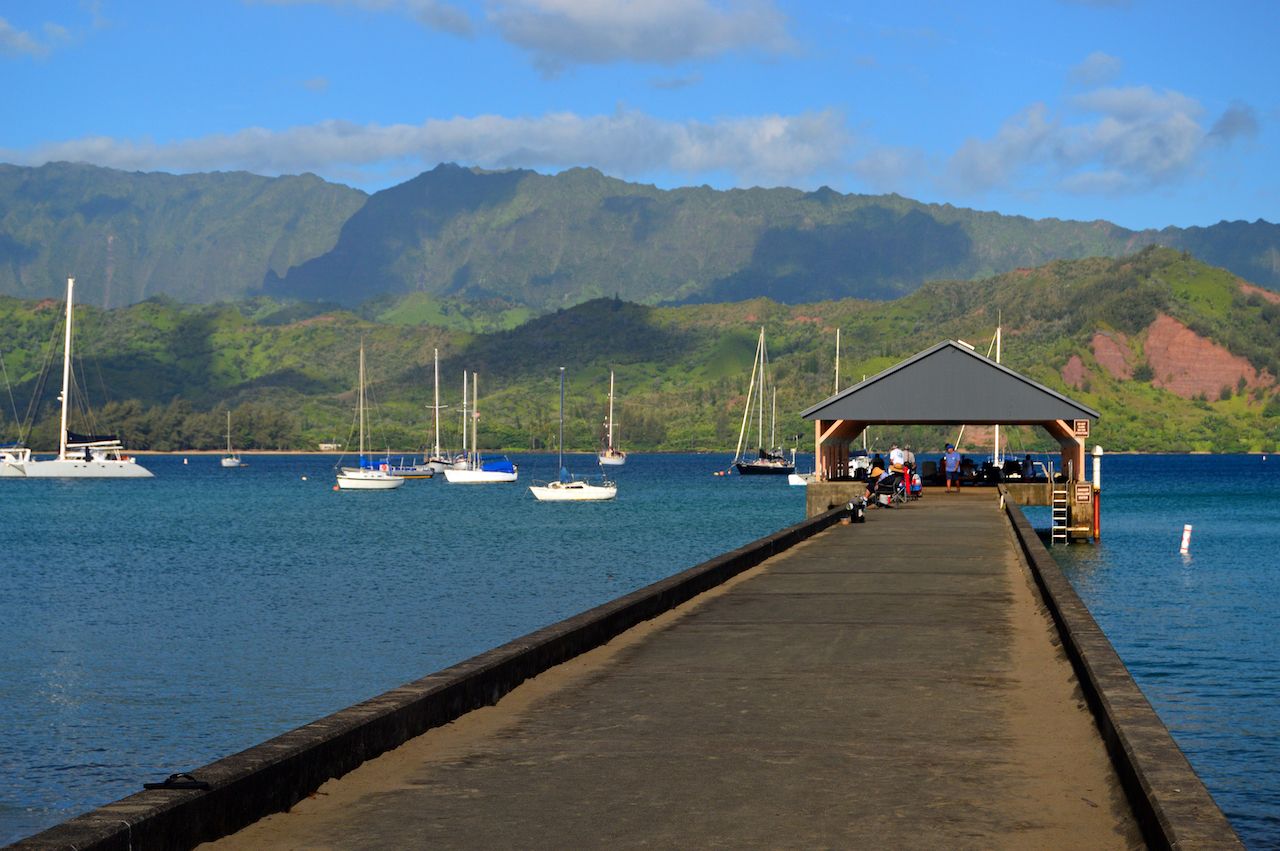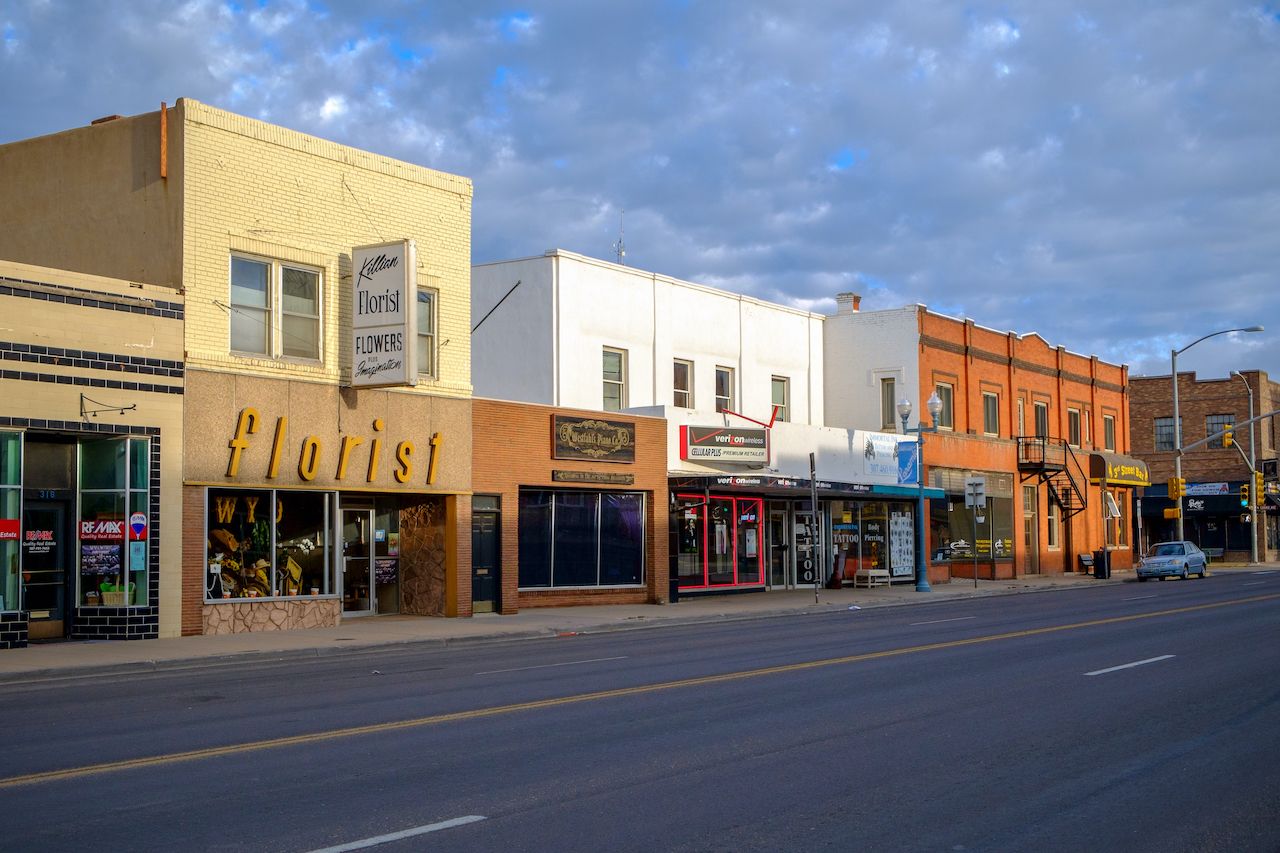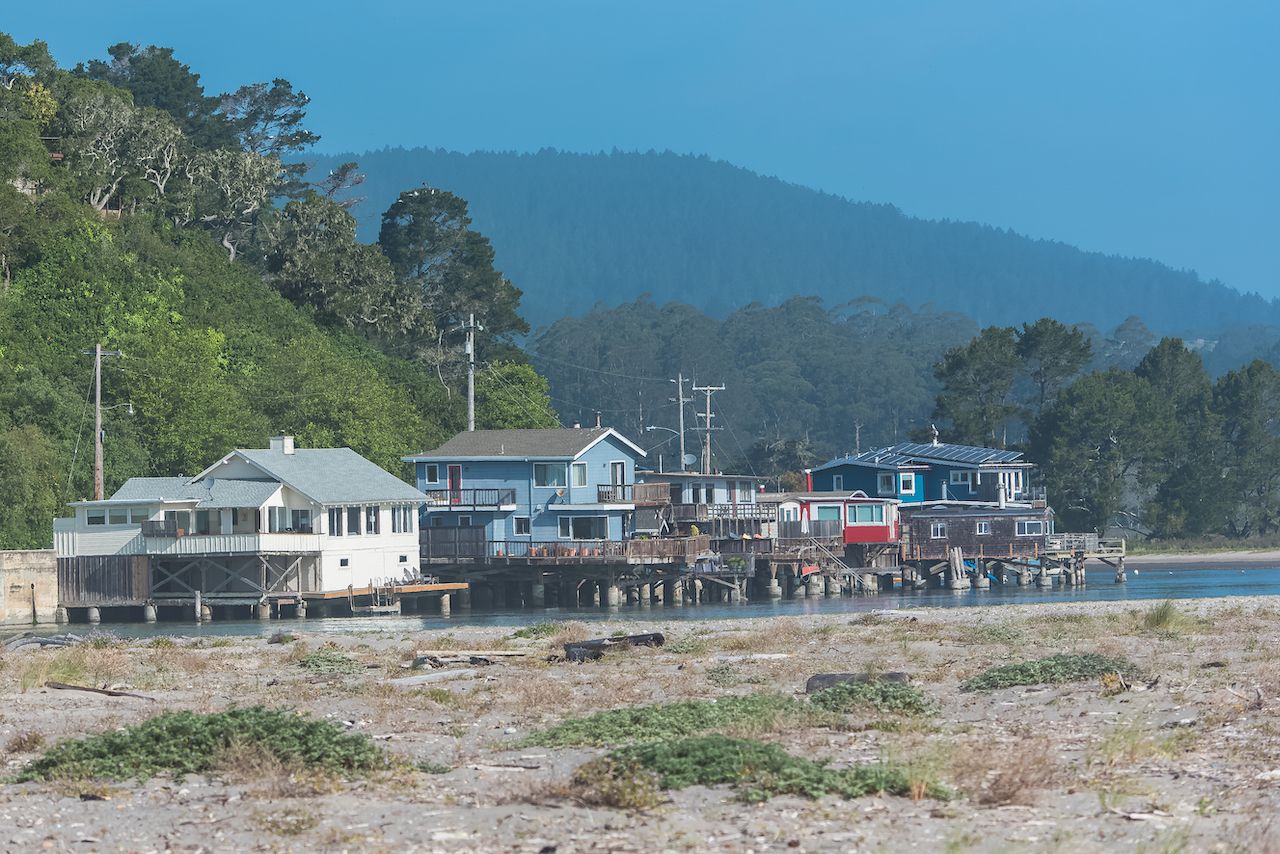The more you travel to big destinations and famous cities, the harder it gets to appreciate them. You can’t really hate on world-class chefs and major league sports, but after you’ve lugged your suitcase up enough subway stairs and drained your bank account on $18 cocktails, you start thinking that small towns might have just as much to offer. And, for short stays, many of them do.
Of course, smaller hotspots rarely stay small for long. Tiny cities like Portland, Maine, and Boulder, Colorado, are just as crowded during peak season as their more populated neighbors, and some small towns that ended up on this list in previous years — like Bend, Oregon, and Greenville, South Carolina — are now household names. So where in this big country can you still have a great time with no crowds, no price-gouging, and a whole lot on offer this coming year?
Each of these 25 towns, all with populations under 100,000, offers something special and has come into its own as a destination of late. Whether you’re looking for untamed wilderness or sandy beaches, deep history or provocative art, craft cocktails or cheap beer, these are the 25 coolest small towns in the US to visit next year.
This year’s list of coolest towns was written by Matthew Meltzer, Noelle Salmi, Nickolaus Hines, Tim Wenger, Elisabeth Sherman, Alex Bresler, and Laura Reilly, with submissions from the entire Matador Network staff. Entries are in no particular order.
1. Marfa, Texas
Population: 1,772
Say what you will about Beverly Hills and Bal Harbour. No city in the world has seen more of a tourism boom from a Prada outlet than Marfa, Texas. And the best part is that it’s not even real. The Prada store that’s never open has become the symbol of Marfa’s art scene, and it’s drawn visitors — and vandals — in droves since it opened in 2005. And though it’s certainly Marfa’s most famous art installation, it’s the mere tip of the desert iceberg.
Marfa has become a big-time destination for artists over the past 40 years, beginning when Donald Judd bought an old military base and turned it into an outdoor modern art center in 1979. That’s now the Chinati Foundation, and today, visitors can take private tours that go through massive sculptures and minimalist boxes. In town, you’ll find an odd mix of Old West culture and modern art, best experienced at the Food Shark Museum of Electronic Wonders and Grilled Cheese Emporium. Also in town are plenty of art galleries, bookstores, and coffee shops where you’ll see sometimes-bewildered, long-time locals mixing with art tourists from all over the world.
2. Ketchum, Idaho
Population: 2,763
Sitting at the foot of Bald Mountain and the Sun Valley ski resort, Ketchum’s appeal is immediately obvious. Ketchum has been both a mining town and a summer shepherding destination, but after the opening of the Sun Valley Ski Resort in 1936, it began attracting authors and artists from coastal cities. In fact, Ernest Hemingway is buried here.
Today, Ketchum is a good mix of earthy mountain town with a touch of refinement. In addition to the requisite art galleries you find near most posh ski resorts, the Sun Valley Center for the Arts is an impressive institution, holding exhibits and lectures from local and international artists that are well worth checking out. By night you can get beers and burgers at the Sawtooth Brewery Public House or wood-fired pizzas and a glass of Idaho wine at Enoteca. Afterward, head to Whiskey Jacques for live music.
The main focus in Ketchum, of course, is still outdoors. In winter, you could be hitting the Sun Valley slopes or cross-country skiing at its Nordic center. You can descend the same steps on a mountain bike in summer, or opt to hike in the Sawtooth Wilderness Area. Fly-fishing is big here; you’ll find trout in town at Warm Springs Creek and steelhead and chinook up north on the Salmon River, among many other waterways.
3. Redding, California
Population: 91,794
California’s largest city north of Sacramento serves as the gateway to the state’s most expansive swath of spectacular nature, and it might be the West Coast’s best adventure destination that hasn’t yet received mainstream recognition. Within an hour’s drive you can find yourself deep in Lassen Volcanic National Park, which is like a little slice of Iceland in Northern California. Inside the park, you can walk through steaming lava fields in the morning, climb to the top of Mount Lassen in the afternoon, and camp by its serene lake at night.
Redding is also surrounded by a loop of waterfalls, which you can drive for a long day of hitting spots like Burney and McLoud Falls before stopping for one of the state’s best burgers at Yak’s on the 5. In town after a day of exploring, you can slosh down hearty wheat beers at Woody’s Brewing and enjoy a thick steak at the Market Street Steakhouse. Or you can visit the city’s landmark Sundial Bridge and enjoy cocktails and flatbreads on the Sacramento River at Mosaic.
4. Grinnell, Iowa
Population: 9,027
Garnering yourself the title of “Most Badass Town in the Midwest” is no small achievement, but kick around this college town an hour east of Des Moines for a couple of days, and it won’t seem far-fetched. The home of Grinnell College feels every bit the free-spirited college town, with bicycles darting through traffic and activist stickers plastered on bumpers. There’s an arts center and a nationally recognized art gallery. For food, there’s Prairie Canary, a restaurant that serves burgers the size of your head.
In Grinnell, you’ll find farmers sitting down for a beer next to college professors at Peace Tree Brewing. You’ll see that same cross-section of the prairie at the college’s basketball games — which are free. Grinnell’s also home to possibly the coolest small-town hotel in the country, the Hotel Grinnell, which was crafted out of an old junior high school. It uses the old locker rooms as bunk rooms, has chalkboards in every room, and uses the gym scoreboard as décor in its restaurant.
5. Rehoboth Beach, Delaware
Population: 1,496
Summers on the beach in Rehoboth are a mid-Atlantic tradition. And while this may not be an unknown-to-tourists beach town on the eastern seaboard, it does strike the perfect balance between relaxing nature and boardwalk camp. Strolling the main drag and stopping into Kohr Brothers for custard or Dolle’s Candyland for candy feels as natural a part of summer as jumping in the ocean. As does playing skee ball and riding the merry go round at Funland.
But what makes Rehoboth Beach stand out compared to other shore towns is that it’s one of the most LGBTQ-friendly small towns in the entire country. This queer capital has a renowned LGBTQ community center, CAMP Rehoboth, that’s helped shepherd the opening of gay-owned and -operated businesses on the boardwalk and beyond.
Not far away from town, you can enjoy the coastline at Cape Henlopen State Park, where miles of trails and uninterrupted sand feel a world apart from the boardwalk. There’s also Dogfish Head Brewery, which has become a destination in its own right, and the Rehoboth Beach Museum, a free historical museum with some entertaining artifacts from the early days of this seaside retreat.
6. Bardstown, Kentucky
Population: 13,165
Pound for pound, no city in America has cooler places to stay than Bardstown, Kentucky. Though bourbon is probably why most people come here, it’s the only city in America where you can stay in a 200-year-old jail (in an actual cell), a bourbon-themed bed and breakfast, and a tavern both Abraham Lincoln and Jesse James once visited. And you should be glad the city has such fantastic accommodations because, at the end of a long day in Bardstown, you’re going to sleep like a champ.
The distilleries are the obvious draw here. There are six in town, including the ultra-modern Bardstown Bourbon Company, which helps produce dozens of whiskeys for smaller labels in addition to its own bourbon, and Heaven Hill. which has sweeping bluegrass vistas. The cuisine in town is another draw, especially the newly opened The Bar at Willet, which is Willett Distillery’s on-site bar and restaurant that serves elevated Southern small plates and a hell of a good Old Fashioned. You’ll also want to make sure you visit the oldest bourbon bar in America at the Old Talbott Tavern, which dates back 230 years.
Beyond drinking, you can learn more than you ever wanted to about whiskey at the Oscar Getz Museum of Whiskey History, or stroll under 12-foot forest giant sculptures at the Bernheim Research Forest and Arboretum. This Napa Valley of Bourbon offers its own train rides, too, with the Old Kentucky Dinner Train taking people through the countryside with elegant meals and, of course, plenty of whiskey.
7. Cooperstown, New York
Population: 1,769
Baseball has a certain magic to it. This mystic realism that’s not found in any other American sport is captured in movies like Field of Dreams and The Natural. That magic emanates from baseball’s home in Cooperstown.
Anecdotally, this town in the Catskills was the birthplace of baseball. And while that may or may not be true, strolling the Rockwell-esque main street is both surreal and soothing at the same time. Storefronts that would normally be drugstores, bars, and offices in Small Town USA are all baseball memorabilia shops and baseball art galleries. If nothing else, this world of nothing but baseball offers an escape from the real world.
Not to say the city doesn’t have other things. Brewery Ommegang Brewing is here, and you can just as easily spend a day enjoying its Hennepin and Abbey Ales on the grassy patio as you can at the Baseball Hall of Fame. Cooperstown also sits on Otsego Lake, where you can marvel in the emerald hills reflecting off the water while enjoying drinks on the deck at the Otesaga Resort. The dreamy, natural beauty is why even non-baseball fans will love it here. But for fans of the game, there is simply no place that will transport you to childhood quite like Cooperstown.
8. Deadwood, South Dakota
Population: 1,304
In much the way Cooperstown provides a mountain escape into baseball, this city deep in South Dakota’s Black Hills takes you from reality into the Wild West. Your first hint is when, upon driving into town, your car is diverted off Main Street because of a gunfight. Not a real one, mind you, but one of the many daily gunfight reenactments Deadwood puts on as part of its time-travel back to the 1870s.
This one-time mining town and outlaw’s paradise leans hard into its dirty past, preserving the brothels, saloons, and haunted hotels that inspired HBO to create its namesake TV series. You can visit Saloon #10 and not only see where Wild Bill Hickok got shot but also see it happen through reenactment three times a day. Or drink in one of the many other bars from the city’s gun-slinging heyday, as well as gamble in one of the city’s many casinos.
There’s a graveyard overlooking the city where you can pay your respects to Wild Bill, Calamity Jane, and Seth Bullock. If you’d rather be carted around, there are carriage-led tours that tell the city’s whole sordid history. Deadwood is a cleaned-up look at what was historically one of the most dangerous cities in American history, and it’s a fantastic place to go and play bad guy for a handful of days.
9. Spartanburg, South Carolina
Population: 37,498
During most of the 20th century, Spartanburg was a major center for textile mills. While that industry has waned, it left a legacy of all-night diners (opened so factory workers would always have a place to eat) that makes Spartanburg a little slice of New Jersey in the Carolinas. You won’t find a stronger diner culture in the South, and the city’s two best — Peach Blossom and The Beacon Drive-In — have gotten some TV fame.
Beyond the diners, you can eat in one of the city’s old mills at Heirloom, a restaurant where the name is both a tribute to the blue-collar food it serves and how ingredients come from the area. UnderPin Lanes n’ Lounge keeps the textile puns rolling with a boutique bowling alley set in an old department store. It’s also got arcade games and a barbecue restaurant.
Though the mills are mostly gone, Spartanburg still clings to its industrial identity, which is now defined by the town’s role as the home of BMW in the USA. If you buy a Bimmer — or pay to use the track — you can visit the sprawling facility here and take a performance car for a few high-speed loops.
10. Ruidoso, New Mexico
Population: 7,756
Ruidoso embodies the warm community spirit that makes for a great small town, and its location in the Sierra Blanca mountains is an added bonus. This seclusion in the hills of southern New Mexico is what makes it so cool. Just when you think the high country had given way to open prairie and ranch land, a sharp left off Interstate 25 lands you smack in the middle of an outdoorsman’s paradise.
Wide-open trail systems, welcoming locals, and North America’s southernmost ski area await. Just down the road, the expansive dunes of White Sands National Monument are ideal for hiking or chilling on the sand as the sun sets over the mountains to the west. Lost Hiker Brewing, operated by a couple that, like most, was drawn to Ruidoso by its expansive outdoors, welcomes you with a cold pint after you’ve found your way back to town.
Historically, Ruidoso’s biggest draw has been horse racing at Ruidoso Downs, but what keeps people around this town of about 8,000 is the easy mix of innovative, homegrown food from spots like Hunt and Harvest, the petit verdot from Noisy Water Winery, and native crafts from the midtown storefronts. That, and the feeling that this place is on the verge of its 21st-century boom as soon as the crowds from up north move past Taos and Santa Fe.
11. Whitefish, Montana
Population: 7,608
Thanks to its proximity to Glacier National Park, you might spot a grizzly bear and her cub emerge from the forest at the end of the train tracks when you travel to Whitefish, Montana, on Amtrak. A newcomer might be mystified and startled by such a sight, but this is Montana, and such incidents are commonplace. Bear sighting or not, you’re greeted by clear blue skies punctuated by white-capped mountains as you arrive, and the smokey, cleansing smell of fresh pine is in the air from the moment you pull into Whitefish Depot.
Whitefish is the gateway to Glacier National Park, which is just a little more than 30 minutes away. In Glacier, you’ll find mountains, dense forests, and wildlife ranging from bears and cougars to bighorn sheep. There are ski slopes in the winter and mountain-biking trails that shine in the snowless months. In the summer, Whitefish Lake State Park becomes a temporary home for families camping, swimming, boating, kayaking, and fishing.
Downtown Whitefish is small, but you don’t have to be a mountain climber or a thrill-seeker to find something to love here. Whether you prefer to sit among the snowbanks with a hot toddy or you’d rather wear skies than regular shoes, Whitefish offers visitors an undisturbed natural beauty that’s a quickly disappearing vision in America.
12. Bentonville, Arkansas
Population: 49,298
Visiting the home of the original Walmart is a far more enriching experience than, say, a pilgrimage to the first Cracker Barrel. Bentonville has literally grown up around Walmart, birthing the world’s largest retailer right in the middle of its town square. The quaint sign above it still simply says “Walton’s,” and, if nothing else, it’s a testament to how business savvy and smarts can make even the smallest business a giant.
The Walton family’s money also brought Bentonville the Crystal Bridges Art Museum, which made itself into a top-tier art destination with exhibits like Yayoi Kusama’s Infinity Mirror Room and a Frank Lloyd Wright house relocated from New Jersey. In addition to its permanent collections, Crystal Bridges has seasonal exhibits that showcase everything from a look at how artists use text in their works to illumination installations that turn the museum grounds into a colorful lit-up wonderland.
Leading out of the museum, there’s a bike trail winding its way through the idyllic Arkansas wilderness before arriving in downtown. Once there, you’ll find rows of brightly colored buildings that look almost Caribbean, with restaurants like Tusk and Trotter and Oven & Tap. Those spots put a distinctly Arkansas twist on Southern food with options like ground wild boar sandwiches with tusk bacon and jowl jam, and Cubanos made with pork jowl, pork loin, and Arkansas barbecue sauce. It’s the odd small town where you’ll legitimately find food you won’t ever see on menus back home, and that alone makes the home of Walmart a lot more than a retail headquarters.
13. Sitka, Alaska
Population: 8,869
“Small” is a relative term in Sitka, which holds the distinction of being the largest city by land mass in America while also having a population smaller than a lot of Manhattan city blocks. Spread over Sitka’s 4,815 square miles, Sitka has countless mountain trails that are more or less ignored by cruise passengers who rarely venture far from the port. The Gavan Hill to Harbor Mountain trail is particularly scenic, as is the view from the top of Mt. Edgecumbe, a volcano 10 miles offshore with a seven-mile hike to the top.
Scattered around Sitka is a bunch of tiny islands with old military bunkers for exploring. You can easily spend a day on a boat hopping from island to island learning about Alaska’s military history. Or hit the Fortress of the Bear, a bear rescue center where you’ll learn these big boys are nothing to be all that scared of so long as you respect them. There’s also the Alaska Raptor Center, which houses many of the state’s native birds of prey if you want to learn what exactly you’re looking at in the sky on all those scenic hikes.
14. Abita Springs, Louisiana
Population: 2,540
Back in the heyday of yellow fever in the 1900s, Abita Springs was a country getaway for wealthy New Orleanians looking to escape festering disease. The grand homes and stately hotels they built were a testament to Gilded Age wealth — until everyone lost their money and the place fell into disrepair. Flash forward to the 1970s when hippies and artists took over the old homes. Though they didn’t exactly restore them, they gave them new purposes as artist’s spaces and music venues.
That creative spirit might be part of why Abita Springs is home to Louisiana’s most famous brewery, Abita Beer, and its not-for-the-faint-of-heart Andygator brew. It also has the Abita Springs Opry, a venue dedicated to preserving bluegrass and country music that throws six concerts a year in the town hall. Crafters and collectors flock here in the spring for the annual Abita Springs Whole Town Garage Sale, where many residents clean out their houses and sell oddities you won’t find elsewhere. Except maybe the Abita Mystery House, a roadside attraction full of everything from stuffed gators to glass shards to a full-scale vintage gas station.
15. Woodinville, Washington
Population: 11,997
Spending time in Washington wine country is certainly appealing. Rolling hills. River gorges. Apple picking — if you go the right time of year. It’s also a bit of a schlep from Seattle, and if you’re only in town for a few days, sampling the state’s best stuff isn’t always logistically possible. Unless you make a trip to Woodinville, where Washington’s best wineries have set up tasting rooms so you can taste the fruits of local wine country without leaving around six square blocks.
Woodinville has the highest concentration of tasting rooms anywhere in America — hard to believe for a city that was not much more than a lakeside suburb of Seattle 15 years ago. This means you can wine taste as you might in Walla Walla or the Willamette Valley, only have to pay for a ride to and from Seattle or Bellevue. And much like in other wine regions, a fledgling spirit industry has popped up here, too. So if you want to give your mouth a wine break, check out the big guys at Woodinville Whiskey. Also be sure to check out some small-batch stuff at J.P. Trodden, where the entire operation fits in a space the size of a storage locker.
16. Branson, Missouri
Population: 11,467
There is something to be said for visiting a place for the sole purpose of pure, unadulterated fun. And few places do fun better than Branson. Nobody’s calling it a cultural hotbed. It’s not touting its farm-to-table restaurants and burgeoning art scene. Branson is a place to go to ride roller coasters, eat good food, play on a lake, and concern yourself with nothing more than putting a smile on your face.
The city has more thrill rides per capita than anywhere in America. There are the mega-coasters like the upside-down wooden thrills on Outlaw Run and the record-setting spins on Time Traveler at Silver Dollar City. Then there’s the Bigfoot slingshot and drop along the city’s main drag. Branson also has multiple mountain coasters (single-car rides that feel a little like a dryer, warmer ice luge), the best of which is Runaway at Branson Mountain.
But Branson does real mountains, too, as this Ozark town is a gateway to hiking and camping in Missouri’s best wilderness. Just a few miles away there’s Table Rock Lake, one of the top recreational lakes in the Midwest for fishing, kayaking, and water skiing. If vacations mean getting out of your normal routine and enjoying yourself without reservations, Branson is one of the best places in America. You just have to ignore what anyone else has told you.
17. Ogden, Utah
Population: 87,031
Many forget that Ogden was once one of the wildest places in the Wild West. The transfer point for cross-country trains brought with it an army of robbers and opportunists, as well as the saloons and brothels that supported them. It’s a far cleaner place now, but the historic downtown still looks like a vision of 1880 set against the backdrop of the Wasatch Mountains. Present-day Ogden is fueled by a different kind of adventure, primarily the alpine variety at nearby Snowbasin and Powder Mountain ski resorts.
The town itself, though, is a grittier, artsier alternative to the Aspens of the world. The bars in the Old West downtown are the kinds of places locals still go, and at the underground Funk ‘n Dive, you’ll still find people dancing on top of the tables after too many $5 drinks. Or you can visit an entire bar devoted to the Beatles at The City Club. You’ll taste the best game-based meal you’ll ever have at Hearth on 25th. Art lovers can discover artists who have been priced out of trendier mountain towns now working at the new-ish Nine Rails Creative District.
18. Surfside, Florida
Population: 5,841
It’s hard to imagine a place with rooftop bars looking out at the Miami skyline as “small.” But ask anyone who lives in this village just north of Miami Beach why they love it, and most will say some version of, “It feels like a small town.” Sure, there’s a new Thomas Keller restaurant at the revamped Surf Club — now a towering glass Four Seasons. And the Grand Beach Hotel has a swanky rooftop pool bar with views of the ocean and the skyline. But Surfside still maintains a mid-century beach town charm.
Perhaps it’s the large Hasidic Jewish population that keeps it real and brings Surfside restaurants like the Glatt Kosher Harbour Grill. Or perhaps it’s the prideful locals who have opened spots like Serendipity ice cream, which packs vegetables into its sweet creations and encourages people to take them onto the beach.
Speaking of the beach, Surfside’s beach has a smooth walking and jogging path where you can enjoy Miami’s turquoise waters without the South Beach crowds. Though if you do want something scene-y, the Le Sirenuse Champagne Bar at the Four Seasons has live music at night that draws beautiful people as well as any club in Miami.
19. Salisbury, Connecticut
Population: 3,623
The tiny town of Salisbury sits at the northwest end of Connecticut near the borders with New York and Massachusetts. It’s surrounded by forested hillsides and picturesque bodies of water like Wononskopomuc Lake, also called Lakeville Lake. Its village center in Lakeville has a handful of galleries, but life is pretty low-key in these parts.
That said, if it’s summer, you’re just 15 minutes away from jazz and classical performances in Falls Village, and the same distance from summer theater shows in Sharon. Boating and swimming are also big in the summer, and the hiking and mountain biking options are excellent. A major draw of Salisbury is its proximity to most of the tallest peaks in Connecticut, including Bear Mountain. There’s a healthy winter sports scene in Salisbury too, with cross-country skiing and ski jumping.
The White Hart Inn is the place to stay overnight or grab a drink at a bar that’s also a local hangout. Salisbury is popular with New Yorkers who want a second home away from the bustle of the big city as it’s not too far from the Metro-North train. Those newcomers have helped spur the arrival of a few more interesting shops and restaurants, but the vibe in Salisbury is still outdoorsy and unpretentious.
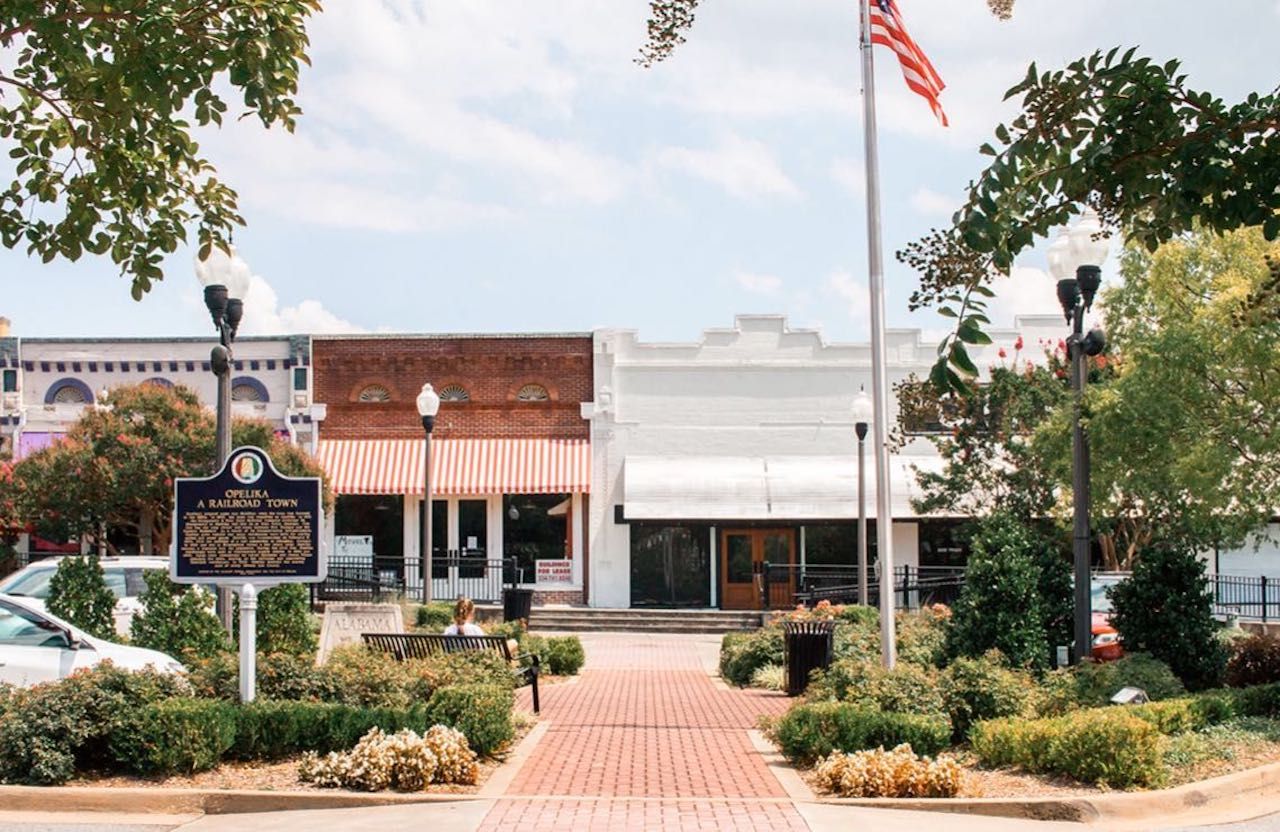
Opelika, AL
20. Opelika, Alabama
Population: 30,240
Opelika is often overlooked. So much so that it’s usually lumped in with neighboring college town Auburn as “Auburn-Opelika.” But thanks to a push to grow Opelika’s small businesses over the past decade, this 30,000-person Southern town is a destination in and of itself.
The big draw is Opelika Main Street, which wraps around the railroad tracks that shuttled people, and then goods, through the region. Once empty brick buildings are now filled with restaurants, bars, event centers, and artist studios you can browse. There are two breweries, Red Clay Brewing Company and Resting Pulse Brewery, as well as a distillery, John Emerald Distillery, that makes whiskey, rum, vodka, and more. Zazu, a gastropub, cooks up seafood and local specialties, while Ma Fia’s is a draw for upscale pasta, pizza, and other Italian food. East Alabama Arts anchors one side of Main Street with the South Side Center for the Arts, and draws international musicians and performances to the nearby Opelika Center for the Performing Arts.
It’d be painfully oblivious to ignore nearby Auburn University on college football gamedays. But if you’re not going for the game, stay in Opelika rather than venture over. There’s plenty to do with a summer farmers market filled with local vendors, and outdoorsy types can find refuge with draws like the Piedmont Plateau Birding Trail, which has the Wood Duck Heritage Preserve, Lake Harding, and a public fishing lake.
21. Manasquan, New Jersey
Population: 5,903
Point Pleasant has the shiny boardwalk, Belmar has the most amenities for tourists, Seaside Heights has the Jersey Shore infamy. Manasquan just has the beach, the swell, and the trusty Surf Taco. While real Jersey Shore locals know not to go anywhere near the shore during the summer, Squan (as it’s called) is somehow the exception to that rule. Here, you can always find an empty stretch of sand to sunbathe or toss a frisbee, and surfers don’t have to compete for waves in the morning. You just have to be willing to schlep your fold-up chair and snack bag a few miles if you’re coming from the train station. And if you visit Manasquan in the off-season, you won’t have to go far to find serenity.
Elsewhere in town, a tight-knit community gets around on beach cruiser bikes, including kids who are given the trust and freedom of yesteryear to hop between friends’ houses and downtown for an ice cream cone at Main Scoop. While Surf Taco is definitely the move if you’re only in town for a day, you can also get a healthy casual meal at Main Street Kitchen, or Jersey Italian-American fare at its best at Antonio’s Trattoria. In the summer, pack into Leggett’s Sand Bar any night of the week for cheap pitchers of domestic beer and a plate of buffalo wings, then nurse your hangover in the morning with a pork roll, egg, and cheese on an everything bagel at Corner Bagelry. Eat it on the sand overlooking the ocean, and you’ll understand what it really means to be from the Jersey Shore.
22. Natchez, Mississippi
Population: 14,886
In order to fully appreciate a place like Natchez, you have to be in the right frame of mind. Yes, the stately old mansions are beautiful and a run along the bluffs that stand above the bright blue Mississippi River can yield some envy-inducing pictures. But the real draw of Natchez is how it immerses you in the culture of the deep South, whether that’s scarfing Frito pie and “Knock-You-Naked” Margaritas at Fat Mama’s Tamales, skeet shooting over a canal — frozen Daiquiri in hand — with Redneck Adventures, or hitting a Southern rock festival in the city’s riverfront park. In the Under-the-Hill neighborhood at the base of the bluffs, you’re transported to a time of saloons, brothels, and colorful characters with bars that stay open until they darned well feel like closing.
Natchez also carries part of the weight of the country’s horrific history, as it was once the center of the domestic slave trade. Unlike many other towns in the deep South, however, it doesn’t hide from its past. Trips through the historic downtown and Museum of African American History are a necessary education in just how brutal that chapter was. A couple of miles from downtown, you can visit the site of the old slave market at the Forks in the Road, a somber memorial to the families torn apart there.
23. Hanalei, Hawaii
Population: 450
This bohemian nook on the wet, northern side of Kauai has a few guesthouses and plenty of big, airy houses to rent, but it doesn’t have hotels. That means that most out-of-towners who come to peruse the beachy surf shops of Hanalei town return to the other side of the island after their lunch of fish tacos or poke bowls. The sunlit mornings and late afternoons are left for the locals and longer-term visitors, who can start the day with quiet walks along palm- and pine-tree-lined Hanalei Bay. Depending on the time of year, the bay may be dotted with a handful of surfers who’ve entered well before the sun peeked over the lush mountains behind Hanalei.
Hanalei holds onto its crunchy local vibe and sense of community. You could sense this after the April 2018 rains closed the road into and beyond town, and when locals really came together to help each other out. You can experience that supportive vibe speaking with the regulars at the Kalypso Bar, or just chatting with the folks at the Hanalei Harvest Market, where you have to try its almond butter smoothie. Beyond the tug of Hanalei Bay, you can kayak on the Hanalei River or hike in the Na Pali cliffs beyond town. Then you can pick up some fresh mahi-mahi from The Dolphin Restaurant fish market and grill at your rented house, possibly with veggies from Hanalei’s weekly farmers market.
24. Laramie, Wyoming
Population: 32,306
Along the windy Interstate 80 corridor in eastern Wyoming isn’t where you’d expect to find a conglomeration of cultures ready to stretch your view of the Old West. But like a cowboy, here’s Laramie to knock you off your horse. On first glance, it’s quintessentially Wyoming: forever casual and never rushed. But Laramie gets much deeper. There’s a bumping music scene that has produced the likes of country star Chancey Williams all the way to punk rockers Teenage Bottlerocket. Catch shows at the Gryphon Theatre and the Cowboy Saloon & Dance Hall.
Dig into a great steak at Altitude Chop House & Brewery, or a burrito at Corona Village before heading out into the Snowy Range. If it’s time for a drink, head to Bud’s Bar on University Avenue, which (allegedly) inspired the legendary Moe’s from The Simpsons. Then walk over the tracks to Crowbar & Grill and eventually make your way to The Library for a pint. In the morning, you’ll see many people from the night before at Coal Creek Coffee.
Laramie gets its college town energy from the University of Wyoming. The university, and the city itself, have not forgotten the tragic murder in 1998 of one of its students, Matthew Shephard, which prompted hate legislation around the country (in 2015, Laramie became the first city in Wyoming to pass an anti-discrimination ordinance for LGBTQ people). Today, the university offers multiple resources and support, as well as scholarships in Matthew Shephard’s name, and it continues to help Laramie evolve into one of the most LGBTQ-friendly towns in the entire region.
25. Bolinas, California
Population: 1,620
For years, road signs for Bolinas had a funny habit of disappearing from Highway 1, the Pacific-hugging state route that put California’s coast on the map. This was no accident: The resident artists, surfers, and hippie holdovers from the days when Jerry Garcia called neighboring Stinson Beach home have always been protective of their sleepy, bohemian hamlet. They did their best to ward off Bay Area weekenders and road-trippers, though many have still found their way to Bolinas. Beyond a spike in vacation rentals, this has had remarkably little effect on the town’s tourist amenities, just the way locals and return visitors like it.
On hot summer days, everyone heads to the main beach off Brighton Avenue, which you may hear referred to as either Bolinas or Brighton Beach. Surfers stalk the waters year-round, especially those intimidated by San Francisco’s notoriously gnarly breaks. There’s only one spot in town to have a proper sit-down lunch, the Coast Cafe, and much of the town’s activity revolves around the Bolinas People’s Store, a food co-op that stockpiles organic produce, non-GMO ingredients, and all manner of eco- and health-conscious goodies.
There isn’t much to do indoors in Bolinas, save slurp down locally harvested oysters and locally brewed craft beer before doing some light shopping or perusing the Bolinas Museum (unless you come for Fourth of July, as it has the most lively parade in the Bay Area). When you’re here, you’re usually outside, be it mining Agate Beach for curious shells, birdwatching at Palomarin Field Station, or venturing further into Point Reyes National Seashore. Though hard to find, by design or otherwise, Bolinas is worth searching for if you’re craving salty sea air and a Northern Californian community with absolutely no attitude.
